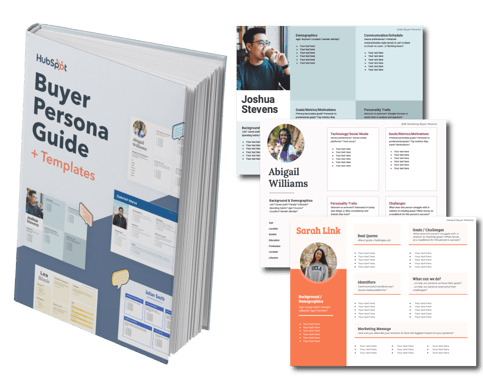The buyer persona gap that’s costing you customers and making your marketing less authentic [+ the fix]

By sonia@soniaethompson.com (Sonia Thompson)
Buyer personas are a foundational component of many brands’ marketing strategy. Personas often serve as a blueprint that guides marketing campaigns, customer journeys, and even product development.
Even though buyer personas are highly effective, they often miss the helpful context that marketers need to effectively serve the various identities their ideal customers possess. As a result, personas aren’t converting certain consumers at the rates that they could be.
In this post, I’ll share where traditional buyer personas miss the mark and how to fix it.
Table of Contents
- The Gap in Most Buyer Personas
- Consumer identities are often part of their decision-making process.
- How to Make Your Buyer Personas More Effective
The Gap in Most Buyer Personas
As an inclusive marketing strategist and consultant, I work with my clients to audit various components of their customer experience. This often includes reviewing and providing feedback on their creative briefs as they work on creating campaigns. It also involves getting consumer feedback on what they make.
Whenever I flag materials that can be improved regarding consumers with specific identities, brands have included specific buyer personas in their creative brief.
However, the execution of the materials wasn’t as successful. That’s often because the personas lacked the depth of information about the various identities of the consumers that the brand wanted to reach.
And as a result, the corresponding campaigns often fail to effectively engage consumers who are part of underrepresented and underserved communities that also fit the buyer persona profile. That’s a missed opportunity. Getting it right makes buyers feel seen, supported, and like they belong.
Here are some examples of challenges that arise with personas that lack specificity. I should note that these are all complaints I’ve heard directly or seen consumers commenting on in various channels:
- Magazine covers that don’t have plus-sized people featured.
- General market ads that don’t feature any Hispanic consumers.
- Website pages that don’t take into account accessibility features to support consumers with disabilities.
- Ads that feature people from underrepresented and underserved communities but lack cultural intelligence elements. The messaging doesn’t speak to their needs or objectives.
- Visual imagery that features people from underrepresented and underserved communities in a stereotypical way.
Consumer identities are often part of their decision-making process.

Every consumer has identities that influence what they buy and who they buy from, whether they know it or not.
For instance, I’m a Black woman. I’m left-handed. I follow a gluten-free diet for health reasons. My husband is a Spanish-speaking immigrant. And, together, we have a mixed-race bilingual child. As both a consumer and a business owner, at least one of these aspects of my identity influences what I buy in more instances than not.
For example, as a business owner, I often look for …read more
Source:: HubSpot Blog









